How Advanced Defense Systems are Enhancing Intelligence Gathering
In an era where information is power, the need for advanced defense systems that enhance intelligence gathering has never been more critical. These systems are not just about collecting data; they are about transforming that data into actionable insights that can shape military strategies and national security policies. As global threats evolve, so too must our methods of gathering intelligence. The integration of cutting-edge technologies such as Artificial Intelligence (AI), satellite systems, and drone technology is revolutionizing the way defense agencies operate. This article delves into how these advancements are redefining intelligence gathering, the implications for global stability, and the challenges that lie ahead.
Artificial Intelligence is at the forefront of this revolution, acting as a catalyst for faster data processing and improved analysis. Imagine having the ability to sift through mountains of data in mere seconds—this is the promise of AI in intelligence gathering. It allows defense agencies to make informed decisions based on predictive analytics, which can forecast potential threats before they materialize. With AI algorithms capable of learning and adapting, the intelligence community can enhance its decision-making processes, ensuring that they stay one step ahead of adversaries. The speed and accuracy of AI not only improve operational efficiency but also provide a significant edge in national security.
Satellite technology has become an indispensable asset in modern intelligence gathering. It provides real-time surveillance and reconnaissance capabilities that enhance situational awareness for military operations. The ability to monitor vast areas from space allows defense systems to gather intelligence without the need for physical presence, significantly reducing risks to personnel. This integration of technology ensures that commanders have up-to-date information at their fingertips, facilitating better strategic planning and execution.
Remote sensing technologies are a game-changer in the field of intelligence gathering. They enable the collection of critical data from afar, allowing defense systems to monitor activities without putting lives at risk. For instance, advanced sensors on satellites can detect changes in terrain, track movements of military assets, and even monitor environmental factors that could indicate potential threats. This capability not only enhances safety but also improves the accuracy of intelligence collected, leading to more informed decision-making.
To maximize the utility of satellite data, advanced imagery analysis techniques are employed. These techniques utilize machine learning algorithms to interpret satellite images, identifying potential threats and gathering actionable intelligence efficiently. The ability to analyze vast amounts of imagery data in real-time means that defense agencies can respond to threats faster than ever before. By automating the analysis process, defense systems can focus human resources on strategic decision-making rather than data processing.
Geospatial intelligence applications leverage satellite data to visualize and analyze spatial relationships. This capability aids in mission planning and execution by providing comprehensive situational awareness. For example, by mapping out the locations of enemy forces and their supply chains, military planners can devise strategies that exploit weaknesses in the adversary's position. The integration of geospatial intelligence into military operations is a critical component of modern warfare, enabling forces to operate with precision and effectiveness.
As intelligence gathering becomes increasingly digitized, the importance of cybersecurity measures cannot be overstated. Protecting sensitive intelligence data from cyber threats is essential to ensure the integrity of the information collected. A breach in cybersecurity can lead to catastrophic consequences, including compromised operations and national security vulnerabilities. Therefore, defense agencies must invest in robust cybersecurity frameworks that safeguard their intelligence operations while maintaining the confidentiality and integrity of their data.
The evolution of drone technology has dramatically transformed intelligence gathering. Drones provide enhanced surveillance capabilities, allowing for real-time data collection in environments that may be too dangerous for manned operations. With their ability to fly at varying altitudes and cover large areas quickly, drones are becoming the eyes in the sky for defense agencies around the world. This technology not only improves situational awareness but also minimizes the risks associated with traditional reconnaissance missions.
One of the most exciting advancements in drone technology is the development of autonomous drones. Equipped with advanced sensors, these drones can conduct intelligence missions independently, collecting data in high-risk environments while minimizing human exposure to danger. Imagine a drone flying over hostile territory, gathering critical intelligence without putting a pilot’s life at risk. This capability enhances operational flexibility and allows for more extensive data collection without the constraints of human involvement.
Swarm technology takes drone operations to the next level by enabling multiple drones to operate collaboratively. This approach enhances reconnaissance efforts and data collection efficiency through coordinated movements and shared intelligence. Picture a flock of birds working together to cover a vast area—this is how swarm technology functions. By leveraging the collective capabilities of multiple drones, defense agencies can gather more comprehensive intelligence and respond to threats more effectively.
Despite these advancements, modern intelligence gathering is not without its challenges. Information overload, ethical concerns, and the need for robust analytical frameworks to interpret vast amounts of data effectively are just a few of the hurdles faced by defense agencies. The sheer volume of data generated can be overwhelming, leading to potential misinterpretations and delayed responses. Moreover, ethical considerations surrounding surveillance and data collection practices must be addressed to ensure that intelligence gathering is conducted responsibly and within legal frameworks.
- What role does AI play in intelligence gathering? AI enhances data processing, analysis, and predictive capabilities, improving decision-making for defense agencies.
- How does satellite technology contribute to intelligence gathering? Satellite technology provides real-time surveillance and reconnaissance, allowing for enhanced situational awareness.
- What are the benefits of drone technology in intelligence operations? Drones offer real-time data collection and reduce risks associated with manned operations, improving overall intelligence capabilities.
- What challenges does modern intelligence gathering face? Challenges include information overload, ethical concerns, and the need for effective analytical frameworks.

The Role of AI in Intelligence Gathering
Artificial Intelligence (AI) is not just a buzzword; it’s the backbone of modern intelligence gathering. Imagine trying to sift through mountains of data—like finding a needle in a haystack. Traditional methods simply can’t keep up with the sheer volume of information generated every second. AI steps in like a supercharged detective, enabling faster data processing and enhancing the analysis of complex datasets. With algorithms that learn and adapt, AI can spot patterns and trends that human analysts might miss. This capability is invaluable for defense agencies worldwide, as it significantly enhances their decision-making processes.
Consider the vast amounts of data collected from various sources: social media, satellite imagery, and even intercepted communications. AI can process this data at lightning speed, turning chaos into clarity. For instance, AI-driven tools can analyze social media sentiment in real time, providing insights into public opinion during a crisis. This information can be crucial for strategic planning and response. Furthermore, predictive analytics powered by AI can forecast potential threats, allowing defense agencies to take proactive measures rather than reactive ones.
Additionally, AI systems are designed to learn from new data continuously, which means they become more effective over time. This self-improving capability is akin to having a personal assistant who gets better at their job the more they work with you. The implications for national security are profound. With AI, agencies can enhance their operational efficiency and effectiveness, ultimately leading to a more secure environment.
However, it’s essential to recognize that the integration of AI into intelligence gathering is not without challenges. Issues such as data privacy, ethical considerations, and the potential for bias in AI algorithms must be addressed. Ensuring that AI systems are transparent and accountable is crucial to maintaining public trust.
In summary, the role of AI in intelligence gathering is transformative. It enhances data processing, improves analysis, and provides predictive capabilities that are essential for modern defense strategies. As we continue to embrace these technologies, the future of intelligence gathering looks not only more efficient but also more precise.
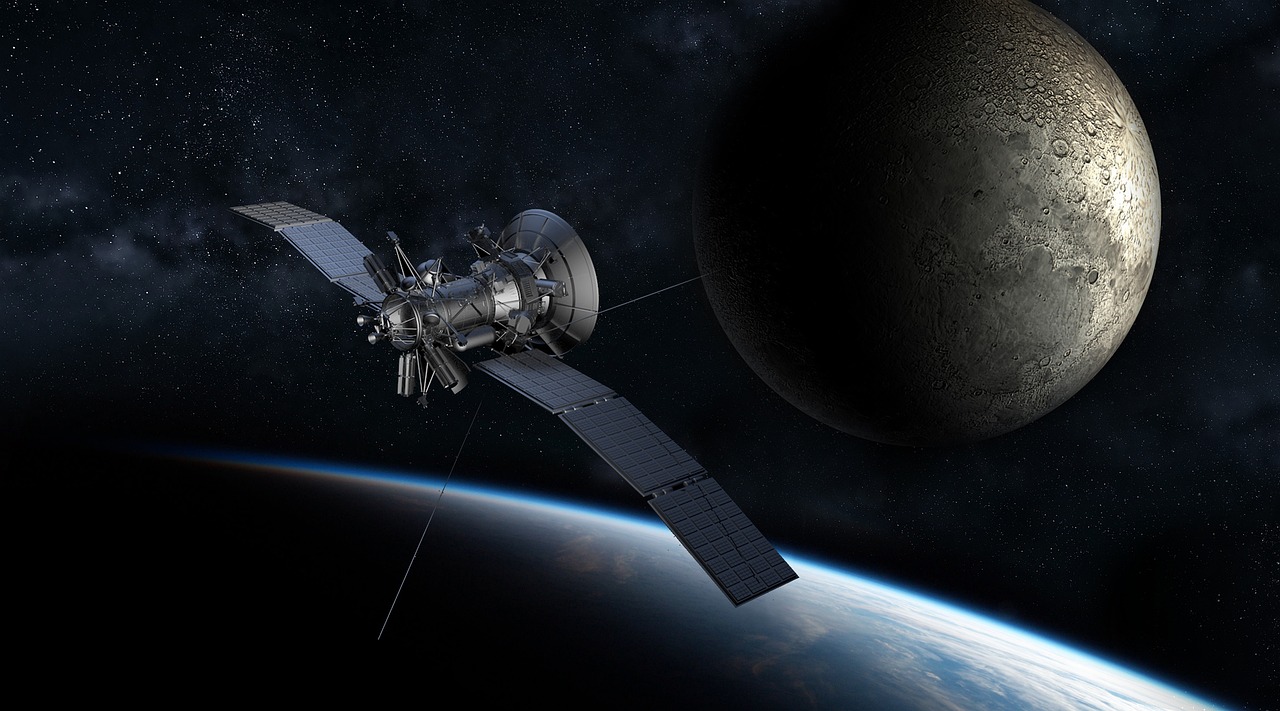
Integration of Satellite Technology
The integration of satellite technology into modern intelligence gathering has transformed how defense agencies operate. Gone are the days when intelligence was gathered solely through ground operations or human reconnaissance. Today, satellites provide a bird's-eye view of the world, enabling real-time surveillance and reconnaissance that significantly enhances situational awareness. Imagine being able to monitor a vast landscape from space, pinpointing activities and movements with incredible precision. This capability not only saves time but also minimizes risks associated with traditional intelligence-gathering methods.
One of the most significant advantages of satellite technology is its ability to provide real-time data. Whether it's tracking troop movements, monitoring natural disasters, or assessing the aftermath of conflicts, satellites deliver information almost instantaneously. This immediacy allows decision-makers to respond swiftly and effectively, which is crucial in high-stakes situations. For instance, during military operations, commanders can utilize satellite imagery to adapt their strategies on the fly, ensuring they remain one step ahead of potential threats.
Moreover, the integration of satellite technology extends beyond mere observation. It encompasses a range of applications, such as communication capabilities that facilitate seamless coordination among military units. The ability to transmit data securely and efficiently enhances operational effectiveness, allowing for better planning and execution of missions. In an era where information is power, having reliable communication channels is indispensable.
Remote sensing capabilities are a game changer in the realm of intelligence gathering. They allow defense systems to collect critical data from great distances, enabling them to monitor activities without the need for physical presence. This technology significantly reduces risks to personnel and assets. For example, satellites equipped with advanced sensors can detect changes in terrain, track the movement of vehicles, or even identify unauthorized construction activities in sensitive areas. The ability to gather such intelligence without putting boots on the ground is invaluable.
As satellite images are collected, the next step involves analyzing this data to extract actionable intelligence. Advanced imagery analysis techniques, powered by machine learning algorithms, are at the forefront of this process. These algorithms can process vast amounts of imagery quickly and accurately, identifying potential threats that might go unnoticed by human analysts. By automating the analysis process, defense agencies can focus their efforts on interpreting the results and making informed decisions.
Geospatial intelligence applications take satellite data a step further by visualizing and analyzing spatial relationships. This capability is crucial for mission planning and execution, as it provides a comprehensive view of the operational environment. For instance, by layering different types of data—such as terrain maps, weather patterns, and enemy positions—military planners can devise strategies that account for various factors, increasing the likelihood of mission success.
In summary, the integration of satellite technology into intelligence gathering not only enhances operational capabilities but also ensures that defense agencies are equipped to handle the complexities of modern warfare. The combination of real-time data, remote sensing, and advanced analysis techniques creates a robust framework for gathering intelligence that is both efficient and effective.
- What is the primary purpose of satellite technology in intelligence gathering? Satellite technology is primarily used to provide real-time surveillance, reconnaissance, and communication capabilities, enhancing situational awareness for military operations.
- How does remote sensing work? Remote sensing involves collecting data from satellites equipped with sensors to monitor activities and gather intelligence without a physical presence.
- What role do machine learning algorithms play in imagery analysis? Machine learning algorithms automate the analysis of satellite images, allowing for quick identification of potential threats and actionable intelligence.

Remote Sensing Capabilities
Remote sensing capabilities have emerged as a game-changer in the realm of intelligence gathering, allowing defense systems to collect vital information from a distance without the need for physical presence. This technological advancement is akin to having a bird's-eye view of the battlefield, providing a comprehensive understanding of the operational environment. Imagine being able to monitor enemy movements, assess terrain conditions, and gather intelligence on critical infrastructure—all without putting personnel in harm's way. The power of remote sensing lies in its ability to capture data through various means, such as satellites, drones, and other aerial platforms, creating a rich tapestry of information that can be analyzed for strategic decision-making.
One of the key aspects of remote sensing is its ability to operate in diverse environments. Whether it's the dense jungles of Southeast Asia or the arid deserts of the Middle East, remote sensing technologies can adapt to various conditions, ensuring that intelligence gathering is not hindered by geographical challenges. For instance, satellite imagery can penetrate cloud cover and provide insights during adverse weather conditions, while drones equipped with thermal imaging can detect heat signatures even during the night. This versatility enhances the effectiveness of military operations, allowing commanders to make informed decisions based on real-time data.
Moreover, remote sensing technologies have significantly reduced the risks associated with traditional intelligence-gathering methods. By leveraging advanced sensors and imaging techniques, defense agencies can monitor activities without deploying personnel into potentially dangerous areas. This not only safeguards human lives but also allows for continuous surveillance, ensuring that no critical developments go unnoticed. For instance, unmanned aerial vehicles (UAVs) can fly over hostile territories, capturing high-resolution images and videos that can be analyzed to identify threats or assess damage after an attack.
To illustrate the impact of remote sensing capabilities on intelligence gathering, consider the following
| Technology | Application | Benefits |
|---|---|---|
| Satellite Imaging | Global surveillance and reconnaissance | Real-time data access, broad coverage |
| UAVs | Target acquisition and monitoring | Reduced risk to personnel, flexible deployment |
| Thermal Imaging | Nighttime operations and heat detection | Enhanced visibility in low-light conditions |
In conclusion, remote sensing capabilities are revolutionizing the way intelligence is gathered and analyzed. By providing a wealth of information without the need for direct engagement, these technologies empower defense agencies to maintain a strategic edge over potential adversaries. As we continue to advance in this field, the implications for national security and global stability are profound, making remote sensing an indispensable tool in modern warfare.
- What is remote sensing? Remote sensing is the process of collecting data about an object or area from a distance, typically using satellites or aerial platforms.
- How does remote sensing enhance intelligence gathering? It allows for real-time data collection without physical presence, reducing risks to personnel while providing comprehensive situational awareness.
- What are some applications of remote sensing in defense? Applications include surveillance, reconnaissance, target acquisition, and environmental monitoring.
- What technologies are commonly used in remote sensing? Common technologies include satellite imaging, unmanned aerial vehicles (UAVs), and thermal imaging sensors.
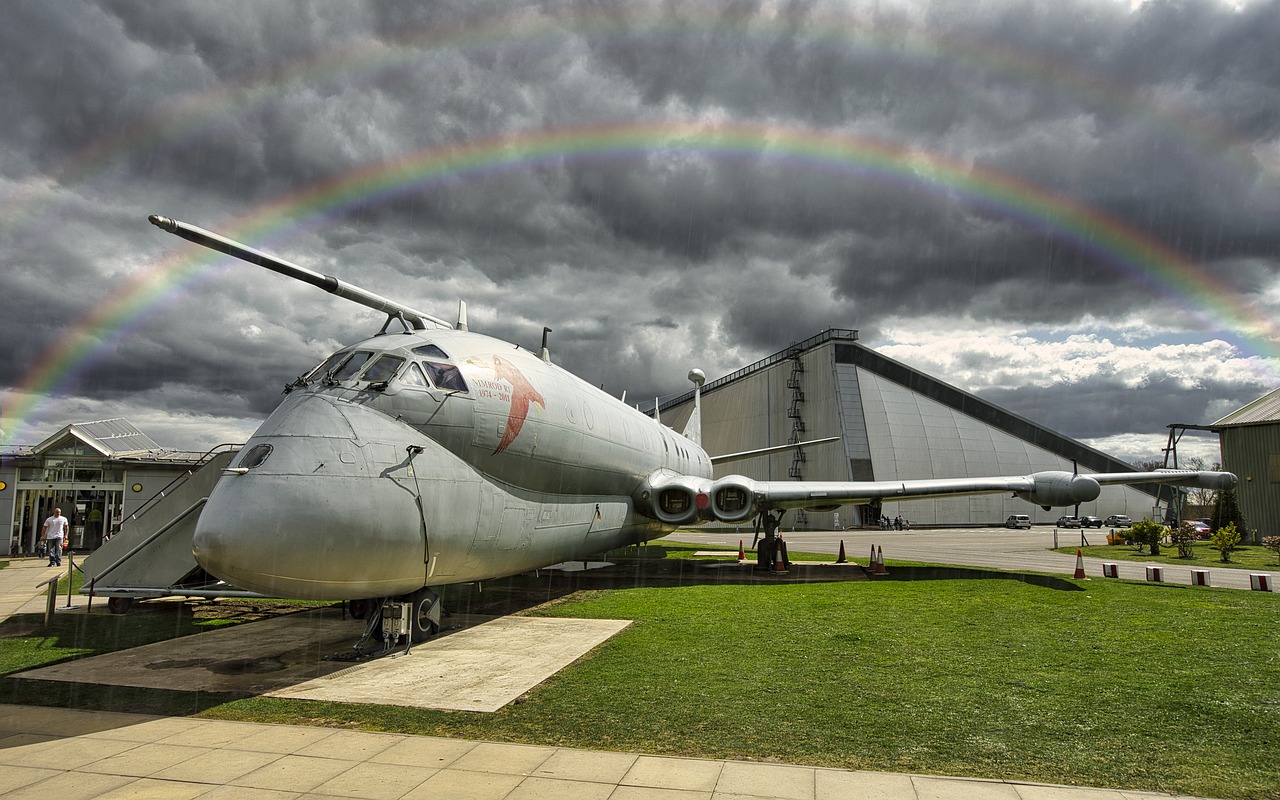
Imagery Analysis Techniques
Imagery analysis techniques have undergone a remarkable transformation in recent years, primarily due to the advent of machine learning algorithms and advanced computational power. These techniques are essential for interpreting satellite images, as they allow analysts to identify potential threats and gather actionable intelligence with unprecedented efficiency and accuracy. Imagine trying to find a needle in a haystack; now, imagine having a magnet that not only finds the needle but also categorizes it, assesses its condition, and predicts its future movements. That's the power of modern imagery analysis!
At the heart of these techniques is the ability to process vast amounts of data in real-time. Analysts can now utilize sophisticated software that can automatically detect changes in environments, monitor troop movements, or even identify infrastructure developments. For instance, when a new building appears in a previously vacant area, the software can flag this change for further investigation. This capability significantly enhances situational awareness, allowing defense agencies to stay one step ahead of potential adversaries.
Furthermore, the integration of artificial intelligence in imagery analysis has led to the development of various methodologies, such as:
- Object Detection: This involves identifying specific objects within a satellite image, such as vehicles, military installations, or natural resources.
- Change Detection: This technique compares images taken at different times to identify changes in the landscape or infrastructure.
- Classification Algorithms: These algorithms categorize different types of land use or cover, providing insights into economic activities or environmental changes.
Moreover, the use of geospatial analysis tools enhances the interpretation of imagery data. By overlaying satellite images with various datasets—like population density, terrain features, and historical conflict zones—analysts can gain deeper insights into the dynamics of a region. This multi-layered approach not only aids in mission planning but also helps in understanding the broader implications of intelligence findings.
However, the reliance on technology does not come without its challenges. As analysts become more dependent on automated systems, there is a growing need for robust validation processes to ensure the accuracy of the data being interpreted. Incorrect interpretations can lead to misguided strategies and, ultimately, jeopardize national security. Therefore, a balanced approach that combines human expertise with machine efficiency is crucial for successful imagery analysis.
In conclusion, the evolution of imagery analysis techniques represents a significant leap forward in intelligence gathering. By harnessing the power of advanced algorithms and geospatial tools, defense agencies can enhance their operational capabilities while minimizing risks. As we continue to navigate an increasingly complex security landscape, these techniques will undoubtedly play a pivotal role in shaping the future of intelligence operations.

Geospatial Intelligence Applications
Geospatial intelligence (GEOINT) is rapidly becoming a cornerstone of modern military operations and strategic planning. By leveraging satellite data and advanced analytical tools, defense agencies can visualize and interpret complex spatial relationships that inform critical decisions. Imagine being able to see the battlefield from above, where every movement can be tracked, and every decision can be backed by real-time data. This is the power of geospatial intelligence.
One of the most significant advantages of GEOINT is its ability to provide comprehensive situational awareness. When military planners have access to detailed maps and imagery, they can assess terrain, identify potential threats, and plan operations with unprecedented accuracy. For instance, during a conflict, commanders can utilize geospatial data to determine the best routes for troop movements, ensuring that they avoid ambushes or challenging landscapes. The integration of this intelligence not only enhances operational efficiency but also significantly reduces risks to personnel.
Moreover, geospatial intelligence applications extend beyond traditional military uses. They play a vital role in humanitarian missions, disaster response, and environmental monitoring. For example, during natural disasters, GEOINT can help assess damage, locate survivors, and coordinate relief efforts effectively. By analyzing satellite images, organizations can identify the hardest-hit areas and allocate resources where they are needed most. This dual-use capability highlights the versatility and importance of geospatial intelligence in various contexts.
To illustrate the impact of geospatial intelligence, consider the following table that summarizes its applications across different sectors:
| Sector | Application | Benefits |
|---|---|---|
| Military | Operational Planning | Enhanced situational awareness and strategic decision-making. |
| Humanitarian Aid | Disaster Response | Efficient resource allocation and improved rescue operations. |
| Environmental Monitoring | Climate Change Analysis | Data-driven insights for policy-making and conservation efforts. |
As we move forward into an era defined by rapid technological advancements, the role of geospatial intelligence will only become more critical. With the ability to synthesize vast amounts of data into actionable insights, GEOINT empowers decision-makers to act swiftly and effectively, whether in defense operations or humanitarian efforts. The future of intelligence gathering is undeniably tied to the evolution of geospatial applications, making it an exciting field to watch.
- What is geospatial intelligence? Geospatial intelligence (GEOINT) is the analysis and visual representation of data related to geographic locations, often used in military and strategic planning.
- How does geospatial intelligence enhance military operations? It provides real-time data that helps in assessing terrain, identifying threats, and planning operational strategies effectively.
- Can geospatial intelligence be used for non-military purposes? Absolutely! It is also crucial for humanitarian aid, disaster response, and environmental monitoring.
- What technologies are used in geospatial intelligence? Satellite imagery, remote sensing, GIS (Geographic Information Systems), and advanced analytical tools are commonly used.
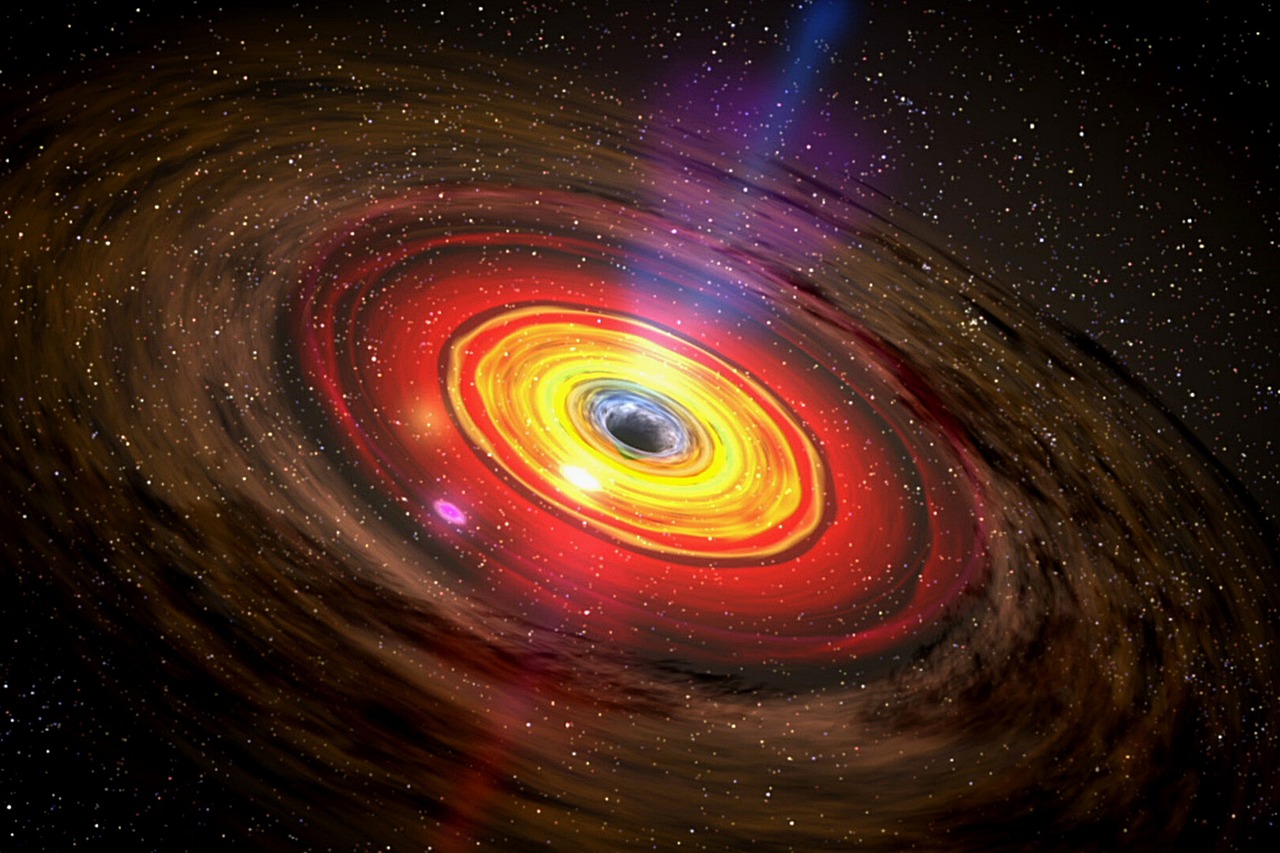
Cybersecurity Measures in Intelligence Gathering
In an age where information is power, the significance of cybersecurity measures in intelligence gathering cannot be overstated. As defense agencies worldwide increasingly rely on digital platforms to collect, analyze, and disseminate sensitive information, the threat landscape has evolved dramatically. Cyber threats are no longer just the concern of tech companies; they pose a serious risk to national security. Imagine a world where adversaries can intercept critical intelligence or manipulate data—this is the reality that military and intelligence organizations face today.
To combat these threats, defense agencies are implementing a variety of cybersecurity strategies designed to protect their intelligence operations. These measures can be categorized into several key areas:
- Data Encryption: Encrypting sensitive data ensures that even if it is intercepted, it remains unreadable without the proper decryption keys.
- Access Control: Implementing strict access controls limits who can view and manipulate intelligence data, thus reducing the risk of insider threats.
- Intrusion Detection Systems (IDS): These systems monitor network traffic for suspicious activity, allowing for quick responses to potential breaches.
- Regular Security Audits: Conducting routine audits helps identify vulnerabilities within systems and networks, ensuring they remain fortified against attacks.
- Training and Awareness: Educating personnel about cybersecurity best practices creates a culture of vigilance, empowering staff to recognize and report potential threats.
While these measures are crucial, the challenge lies in the rapid pace of technological change. Cybercriminals are becoming increasingly sophisticated, employing advanced tactics to breach defenses. This cat-and-mouse game necessitates a proactive approach to cybersecurity, where defense agencies must stay one step ahead. For instance, the integration of artificial intelligence into cybersecurity frameworks can enhance threat detection and response times, allowing agencies to react swiftly to emerging threats.
Moreover, the implications of a cyber breach extend beyond the immediate loss of data. They can lead to a loss of trust in intelligence agencies, jeopardizing international relations and national security. Therefore, investing in robust cybersecurity measures is not just a technical necessity but a strategic imperative. It is about safeguarding the very foundation of intelligence gathering in a world where information warfare is becoming the norm.
In conclusion, as we continue to navigate the complexities of modern intelligence gathering, the emphasis on cybersecurity will only grow. The stakes are high, and the cost of complacency can be catastrophic. By fostering a culture of security awareness and continuously evolving their defenses, intelligence agencies can better protect their operations and, ultimately, their nations.
1. What are the main threats to intelligence gathering in the digital age?
The main threats include cyber espionage, data breaches, insider threats, and sophisticated hacking attempts that target sensitive information.
2. How do encryption methods protect intelligence data?
Encryption converts data into a coded format that can only be read or processed by someone with the correct decryption key, thus safeguarding it from unauthorized access.
3. What role does artificial intelligence play in cybersecurity for intelligence gathering?
AI enhances cybersecurity by enabling automated threat detection, improving response times, and analyzing vast amounts of data to identify potential vulnerabilities.
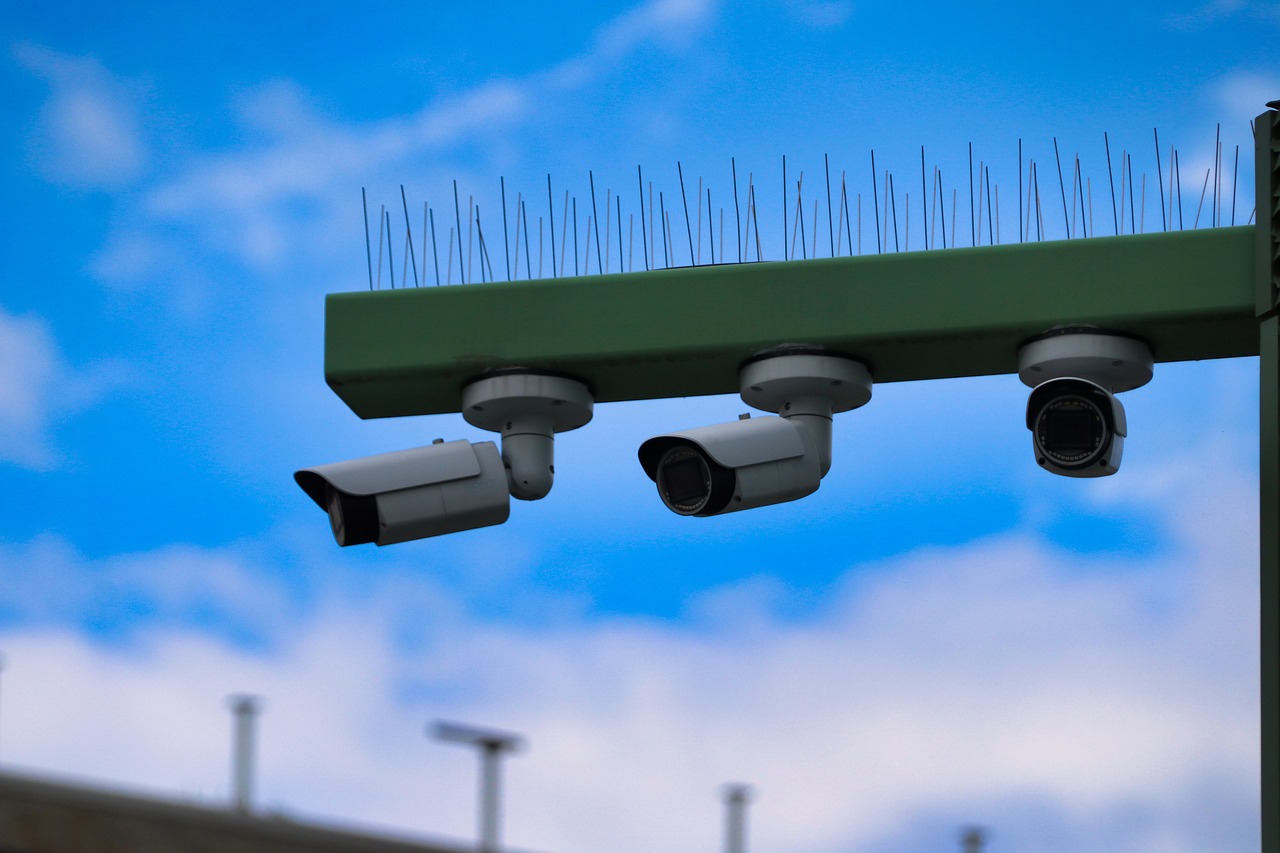
Drone Technology Advancements
The evolution of drone technology has truly transformed the landscape of intelligence gathering. No longer are we confined to traditional means of surveillance; drones have taken the reins, offering a level of flexibility and efficiency that was previously unimaginable. Imagine being able to monitor a vast area without having to send personnel into potentially dangerous situations. This is the reality that advanced drone technology brings to the table.
One of the most remarkable advancements in drone technology is the development of autonomous drones. These high-tech machines are equipped with advanced sensors and artificial intelligence capabilities, allowing them to conduct intelligence missions independently. This means they can navigate through complex environments, gather data, and return without human intervention. The implications of this are profound. For instance, in a conflict zone, autonomous drones can collect crucial intelligence while keeping operators safely out of harm's way. It’s like sending in a scout that doesn’t require a lunch break or a safety briefing!
Moreover, the introduction of swarm technology is another game-changer. This innovation allows multiple drones to work together in a coordinated manner, sharing information and executing missions more efficiently. Picture a flock of birds moving in perfect harmony; that’s what swarm technology aims to achieve in the realm of intelligence gathering. By deploying a swarm of drones, military forces can cover larger areas, gather more data, and respond to threats with unprecedented speed. This capability not only enhances reconnaissance efforts but also ensures that critical information is collected from multiple perspectives, providing a more comprehensive view of the situation.
However, while these advancements are exciting, they do come with their own set of challenges. The integration of drone technology into intelligence operations raises questions about privacy and ethical considerations. As drones become more prevalent, we must ask ourselves: how do we balance the need for security with the rights of individuals? This ongoing debate is crucial as we navigate the implications of using drones for surveillance and data collection.
In conclusion, the advancements in drone technology have revolutionized intelligence gathering, providing enhanced surveillance capabilities that allow for real-time data collection with minimized risks. As we continue to innovate and push the boundaries of what drones can do, it’s essential to remain vigilant about the ethical implications and ensure that these powerful tools are used responsibly. The future of intelligence gathering is undoubtedly bright, and drones are leading the charge.
- What are autonomous drones? Autonomous drones are unmanned aerial vehicles that can operate independently without human control, using advanced sensors and AI technology to navigate and gather data.
- How does swarm technology work? Swarm technology allows multiple drones to collaborate and share information, enhancing reconnaissance and data collection through coordinated movements.
- What are the ethical concerns surrounding drone usage? The use of drones for surveillance raises questions about privacy, accountability, and the potential for misuse in monitoring individuals without their consent.
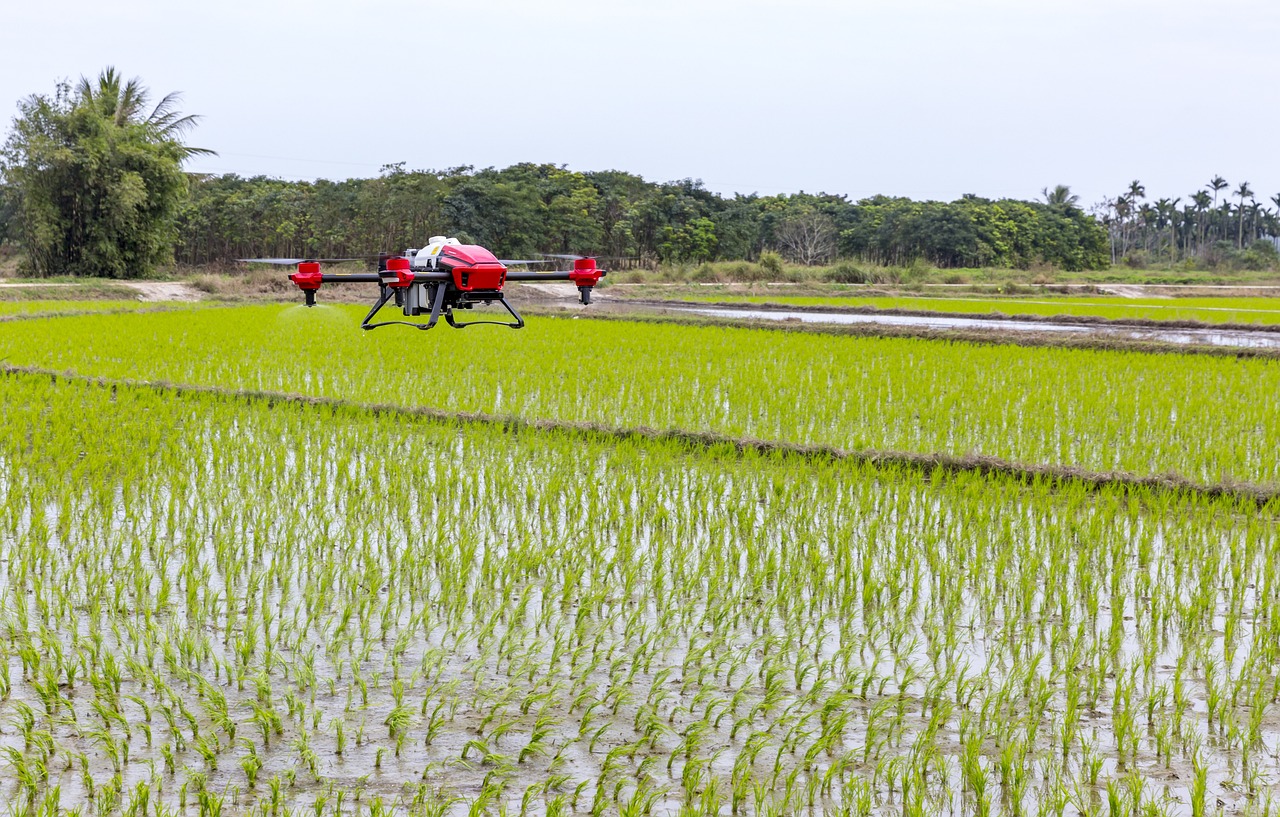
Autonomous Drones
Autonomous drones are at the forefront of a technological revolution in intelligence gathering, fundamentally changing how military and defense agencies operate. Imagine a fleet of intelligent flying machines, capable of navigating complex environments and making real-time decisions without human intervention. These drones are equipped with advanced sensors and artificial intelligence algorithms, allowing them to perform missions that were once deemed too dangerous or logistically challenging for human pilots. With the ability to gather crucial data from high-risk areas, autonomous drones significantly reduce the risks associated with traditional manned operations.
One of the most remarkable features of autonomous drones is their capacity for real-time data collection. These drones can fly over hostile territories or disaster-stricken areas, capturing high-resolution imagery and gathering vital intelligence without putting human lives at risk. The data collected can be analyzed on-the-fly, providing immediate insights that can influence strategic decisions. For instance, during military operations, the intelligence gathered by these drones can help commanders assess the battlefield, identify enemy positions, and plan their next moves with precision.
Furthermore, the integration of machine learning enhances the operational capabilities of autonomous drones. By continuously learning from the data they collect, these drones can improve their navigation skills, target identification, and threat assessment over time. This ability to adapt and evolve makes them invaluable assets in modern warfare and surveillance. In addition to military applications, autonomous drones are also being utilized in various sectors, such as disaster response, environmental monitoring, and infrastructure inspection, showcasing their versatility and effectiveness.
However, the deployment of autonomous drones is not without its challenges. Ethical concerns arise regarding the decision-making capabilities of these machines, particularly in combat scenarios. Questions about accountability and the potential for unintended consequences need to be addressed as we embrace this technology. Moreover, the reliance on autonomous systems raises issues related to cybersecurity, as these drones could become targets for hacking attempts, potentially compromising sensitive operations.
In summary, autonomous drones represent a significant leap forward in intelligence gathering capabilities. Their ability to operate independently and efficiently in high-risk environments not only enhances data collection but also ensures the safety of personnel. As this technology continues to evolve, it will undoubtedly play a pivotal role in shaping the future of defense and intelligence operations.
- What are autonomous drones? Autonomous drones are unmanned aerial vehicles that can operate independently without human intervention, equipped with advanced sensors and artificial intelligence.
- How do autonomous drones enhance intelligence gathering? They provide real-time data collection, reduce risks to personnel, and improve decision-making through advanced data analysis.
- What are the ethical concerns surrounding autonomous drones? Issues include accountability for decisions made by drones, potential for unintended consequences, and cybersecurity risks.
- In what sectors are autonomous drones used besides military applications? They are used in disaster response, environmental monitoring, and infrastructure inspection, among others.
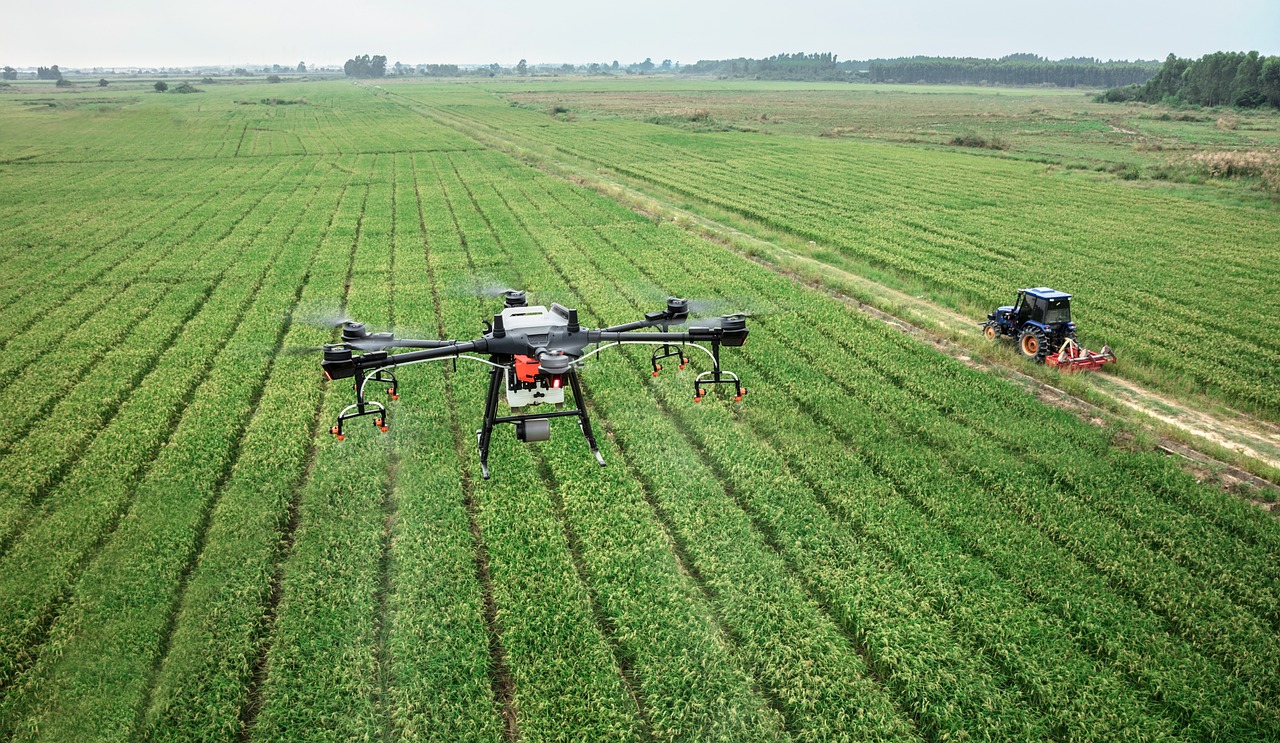
Swarm Technology
Swarm technology is a groundbreaking advancement in the field of intelligence gathering, reminiscent of how a flock of birds operates in perfect harmony. Imagine a group of drones, each acting independently yet working together as a cohesive unit to achieve a common objective. This innovative approach enhances reconnaissance efforts by leveraging the collective capabilities of multiple drones, allowing them to cover large areas more efficiently than a single unit could ever manage. The synergy created through swarm technology not only boosts data collection but also optimizes the overall effectiveness of intelligence missions.
One of the key benefits of swarm technology is its ability to adapt to dynamic environments. When deployed in the field, these drones can communicate with each other in real-time, sharing vital information and adjusting their flight paths based on the data they collect. This collaborative behavior mimics natural systems found in nature, where individual units respond to the actions of their peers, resulting in a highly responsive and agile surveillance network.
Moreover, swarm technology significantly reduces the risks associated with intelligence gathering. In high-threat scenarios, deploying a swarm of drones can confuse adversaries and create a tactical advantage. For instance, if one drone is detected and targeted, others can continue their mission undetected, ensuring that critical intelligence is still gathered. This decentralized approach minimizes the chance of losing valuable assets and enhances the resilience of intelligence operations.
To illustrate the effectiveness of swarm technology, consider the following table that outlines its advantages compared to traditional drone operations:
| Feature | Swarm Technology | Traditional Drone Operations |
|---|---|---|
| Data Collection Efficiency | High - multiple drones collect data simultaneously | Moderate - single drone collects data sequentially |
| Risk Mitigation | High - redundancy in operations | Low - loss of a single drone can compromise mission |
| Real-time Adaptability | Excellent - drones adjust based on shared intelligence | Poor - limited to pre-programmed responses |
| Operational Flexibility | High - can be deployed in various formations | Limited - typically follows a fixed flight path |
As swarm technology continues to evolve, we can expect to see even more sophisticated applications in intelligence gathering. The integration of artificial intelligence and machine learning will further enhance the capabilities of these drone swarms, enabling them to make autonomous decisions and execute complex missions with minimal human intervention. This not only streamlines operations but also allows human operators to focus on strategic decision-making rather than manual control.
In conclusion, swarm technology represents a significant leap forward in the realm of intelligence gathering. By harnessing the power of collective action, these drone swarms are redefining how we approach surveillance and reconnaissance. As we continue to explore the potential of this technology, the implications for national security and global stability are profound, paving the way for a future where intelligence operations are more efficient, effective, and safer than ever before.
- What is swarm technology? Swarm technology refers to the use of multiple drones that operate collaboratively to gather intelligence, enhancing efficiency and effectiveness in surveillance missions.
- How does swarm technology improve intelligence gathering? It allows for simultaneous data collection over larger areas, reduces risks by confusing adversaries, and enables real-time adaptability based on shared information.
- What are the advantages of using drone swarms over traditional drones? Drone swarms offer higher efficiency, better risk mitigation, excellent adaptability, and greater operational flexibility compared to traditional single-drone operations.

Challenges in Modern Intelligence Gathering
In the fast-paced world of modern intelligence gathering, the landscape is constantly evolving, bringing with it a myriad of challenges that defense agencies must navigate. One of the most pressing issues is the phenomenon of information overload. With the advent of advanced technologies, agencies are inundated with vast amounts of data from various sources, including satellites, drones, and cyber platforms. This deluge of information can be overwhelming, making it difficult to discern what is truly relevant. Imagine trying to find a needle in a haystack, but the haystack is constantly growing—this is the reality for intelligence analysts today.
Moreover, the ethical implications of modern surveillance techniques cannot be ignored. As defense systems become more sophisticated, they often tread a fine line between national security and personal privacy. The use of drones and satellite technology for surveillance raises questions about the extent to which governments should monitor their citizens and foreign entities. Are we sacrificing our privacy for security? This ethical dilemma is further complicated by the potential misuse of gathered intelligence, which could lead to violations of human rights.
Another significant challenge is the need for robust analytical frameworks. As intelligence agencies grapple with interpreting vast amounts of data, they require advanced analytical tools that can effectively process and analyze this information. Without these frameworks, the risk of misinterpretation increases, potentially leading to misguided actions based on faulty intelligence. In fact, studies have shown that up to 70% of intelligence data can go unutilized due to inefficient processing methods. This inefficiency not only wastes resources but can also jeopardize national security.
Furthermore, the rapid pace of technological advancement presents a double-edged sword. While new tools and systems can enhance intelligence gathering, they also create a continuous need for training and adaptation. Defense agencies must invest in ongoing education and skill development for their personnel to keep up with the latest technologies. This can strain budgets and resources, particularly for smaller agencies that may not have the same level of funding as larger organizations.
Additionally, the global nature of intelligence gathering introduces challenges related to international cooperation and information sharing. Different countries have varying laws, regulations, and ethical standards regarding intelligence operations. This can complicate joint efforts and lead to mistrust among allies. For instance, what one country considers a legitimate surveillance operation might be deemed an invasion of privacy by another. The intricacies of these international relationships require careful navigation to ensure that intelligence gathering remains effective and collaborative.
In conclusion, while advanced defense systems offer unprecedented capabilities in intelligence gathering, they also come with a unique set of challenges. Addressing issues such as information overload, ethical considerations, analytical needs, technological adaptation, and international cooperation is crucial for the future of national security. As we move forward, striking a balance between utilizing cutting-edge technology and upholding ethical standards will be essential for effective intelligence operations.
- What is information overload in intelligence gathering?
Information overload refers to the overwhelming amount of data that intelligence agencies must sift through, making it challenging to identify relevant information. - How do ethical concerns impact intelligence gathering?
Ethical concerns arise when surveillance technologies infringe on personal privacy, raising questions about the balance between security and individual rights. - What role do analytical frameworks play in intelligence?
Analytical frameworks are essential for processing and interpreting large volumes of data accurately, ensuring that intelligence is actionable and reliable. - Why is international cooperation important in intelligence gathering?
International cooperation enhances the effectiveness of intelligence operations by allowing countries to share information and resources, although it can be complicated by differing legal and ethical standards.
Frequently Asked Questions
- What role does AI play in intelligence gathering?
AI is a game-changer in intelligence gathering! It enables defense agencies to process vast amounts of data quickly, analyze it effectively, and even predict future scenarios. Imagine having a super-smart assistant that helps you make decisions faster and more accurately—that’s what AI does for intelligence.
- How does satellite technology enhance intelligence operations?
Satellite technology is like having eyes in the sky! It provides real-time surveillance and reconnaissance, allowing military operations to gather critical information without being physically present. This capability significantly improves situational awareness and strategic planning.
- What are remote sensing capabilities?
Remote sensing capabilities allow defense systems to collect data from a distance. Think of it as a high-tech spyglass that can monitor activities without putting personnel at risk. This technology is vital for gathering intelligence safely and efficiently.
- How are drones revolutionizing intelligence gathering?
Drones have transformed the landscape of intelligence gathering. They offer enhanced surveillance capabilities and can collect data in real-time. With drones, we can gather intelligence without risking human lives, making operations safer and more efficient.
- What are the challenges faced in modern intelligence gathering?
Despite all the advancements, modern intelligence gathering isn’t without its hurdles. Information overload is a significant challenge, as is the ethical use of technology. Defense agencies must develop robust analytical frameworks to sift through the vast amounts of data and extract meaningful insights.
- What is swarm technology in drones?
Swarm technology allows multiple drones to work together, much like a flock of birds. This coordinated effort enhances reconnaissance and data collection efficiency, as they can share information and cover larger areas more effectively than a single drone could.
- How important is cybersecurity in intelligence gathering?
Cybersecurity is crucial in protecting sensitive intelligence data from cyber threats. As reliance on digital platforms grows, ensuring the integrity of the information collected becomes paramount. Without strong cybersecurity measures, intelligence operations could be compromised.



















